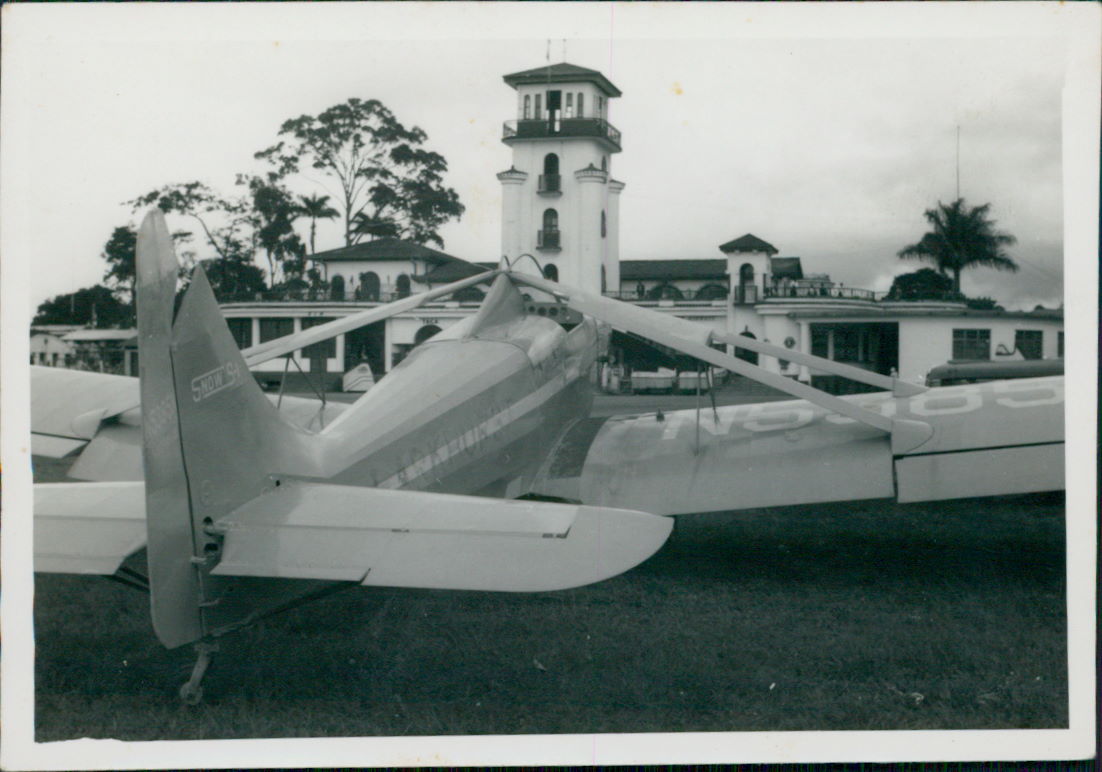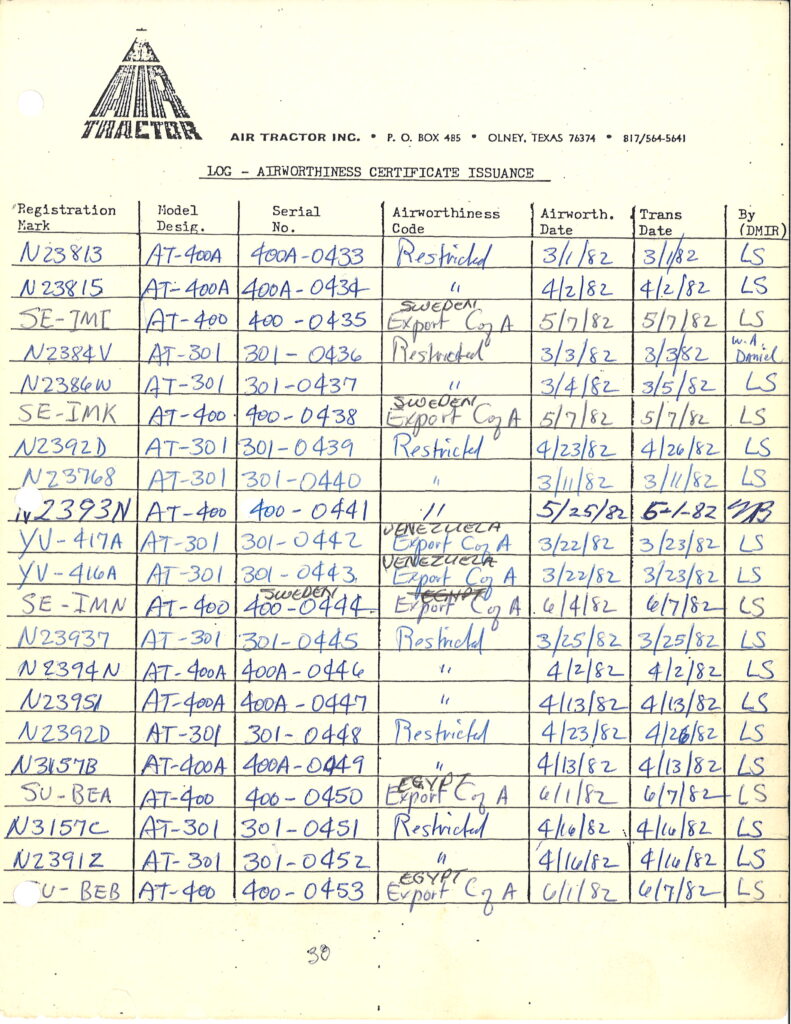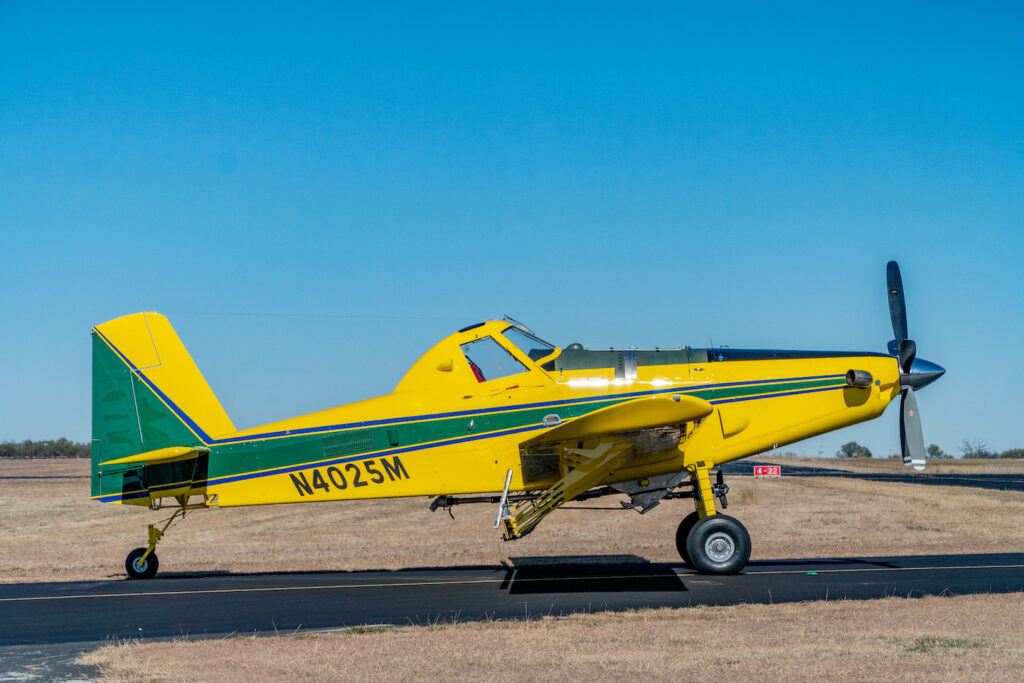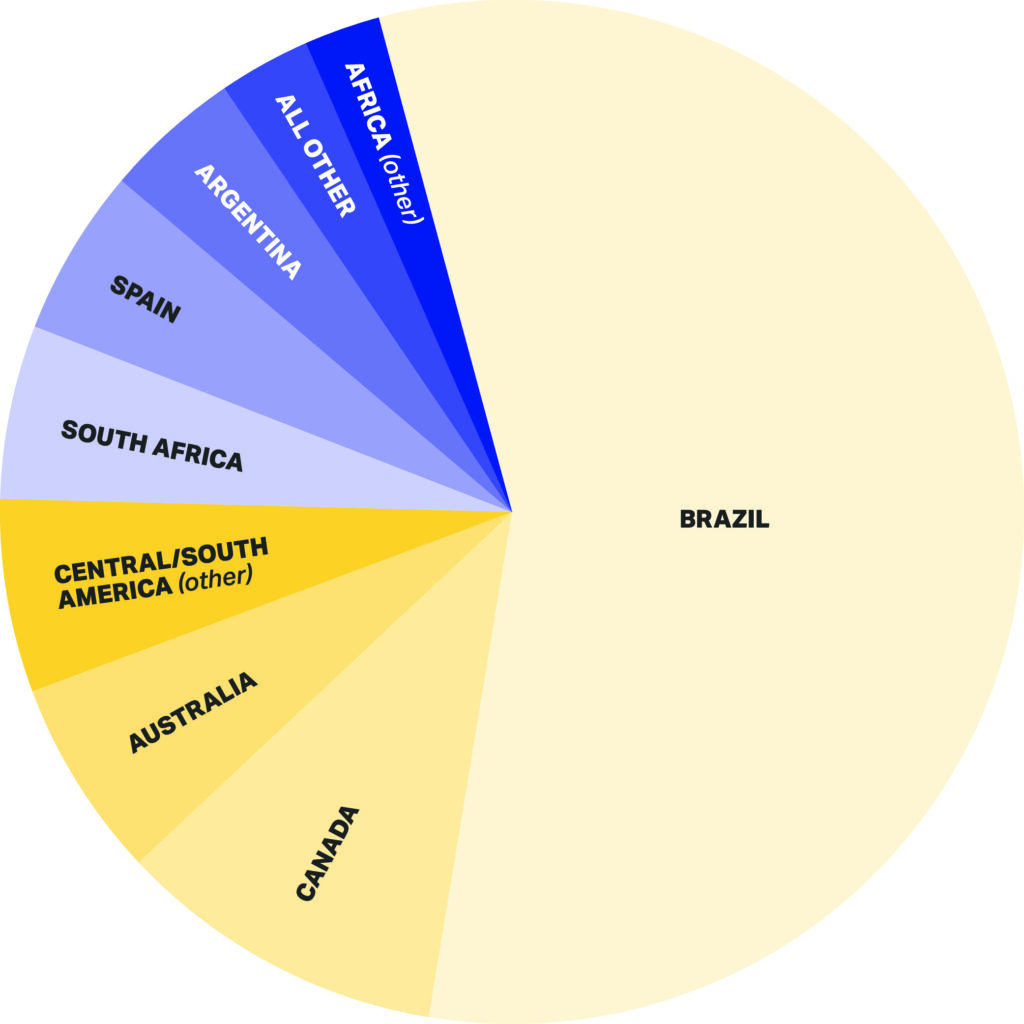Air Tractor’s Global Reach: Proudly Made in America, Flown Around the World

by Kristin Edwards
At Air Tractor, our legacy of excellence isn’t confined to U.S. borders. While our aircraft are a familiar sight flying over American farmland, our impact extends worldwide. Export sales have always been a cornerstone of our successful history, and are even more important now, with an average of 66% of our sales in the last five years made outside the United States. These international sales ensure that Air Tractor remains a global leader in agricultural aviation and aerial firefighting.
A Long History of International Sales
Working in foreign countries is in the DNA of Snow-designed aircraft. Perhaps the reason is that Leland Snow flew his fledgling Snow S-1 in Nicaragua for two crop-dusting seasons in 1954 and 1955.
During this time, he was not only able to earn money for the continued development of his designs, but he also established important contacts and impressed the American pilots and Nicaraguan farmers with the performance of his plane, leading to sales of Snow S-2 aircraft throughout Mexico and Central America for many years to come. In fact, some have said that he did too good of a job selling Snow S-2C, D, and S-2R Thrushes into the banana regions of Central America — It was a little difficult for Air Tractor to break into the market there among the loyal Thrush owners, but we eventually did.

Air Tractor’s first export sales began in June, 1979 with three AT-301s and an AT-302 delivered to Guatemala and an AT-301 delivered to Australia. Then during the 1980s we sold many planes to Egypt, Austria, Sweden, Venezuela, Cameroon, Saudi Arabia, Canada, Colombia, Brazil, Tunisia, Spain, Kenya, South Africa, and Korea.
Over the decades, demand has only increased, and today, Air Tractor aircraft operate in more than 50 countries across six continents. In 2023 and 2024, export sales accounted for 71% and 70% of our total sales respectively.
Why Export Sales Matter
Export sales provide stability and growth for Air Tractor. By reaching international markets, we diversify our customer base, making the company less vulnerable to fluctuations in domestic demand. The agriculture industry is cyclical, and having customers worldwide helps balance seasonal and economic variations.

Additionally, many of our international customers face unique challenges, such as vast, remote farmlands that lack some of the infrastructure we have in the United States. They need productive and reliable aircraft, so the Air Tractor is a crucial tool for their business.
Selling to and supporting these customers in foreign countries is a challenge. There are cultural differences, language barriers, time zone differences, foreign aviation authorities, currency fluctuations, import/export regulations, and much more for our dealers, employees, and customers to deal with. And in many cases, the factory is just really far away. When a spare part or customer support is needed on the other side of the world, we have to be sure that the customer can get it as soon as possible. We’re fortunate to have an excellent network of worldwide dealers and their representatives, maintenance facilities, and pre- and post-sale support from the factory to navigate these challenges.
One key factor in our ability to sell internationally is the support of the Export-Import Bank of the United States (EXIM). This government-backed financial institution helps Air Tractor by providing loan guarantees and credit insurance, making it easier for international customers to purchase our aircraft. EXIM’s assistance reduces the risks associated with international sales and helps us compete on a global scale. On previous occasions politics has jeopardized the renewal of EXIM Bank’s charter, and when this happens, we do our best to make sure our legislators understand the critical importance of this financial tool.

Looking to the Future
The future of Air Tractor’s export sales is promising, but not without challenges from an economic and political standpoint. As global demand for efficient agricultural and firefighting aircraft grows, we continue to expand into new markets. Strengthening partnerships, streamlining production, and enhancing customer support overseas will ensure that Air Tractor remains a top choice for operators worldwide.
International Sales: 2020 – 2024
